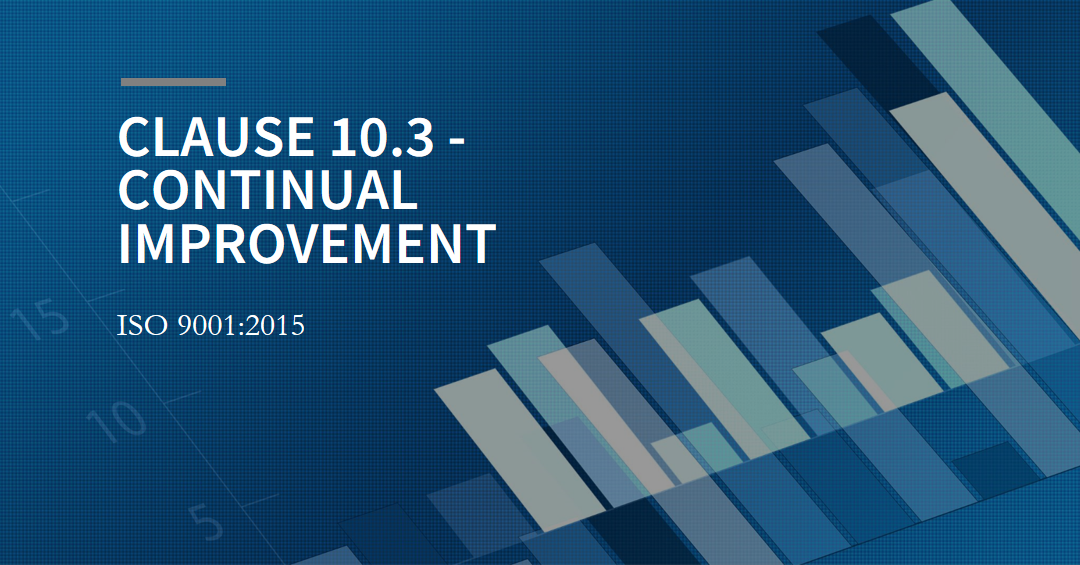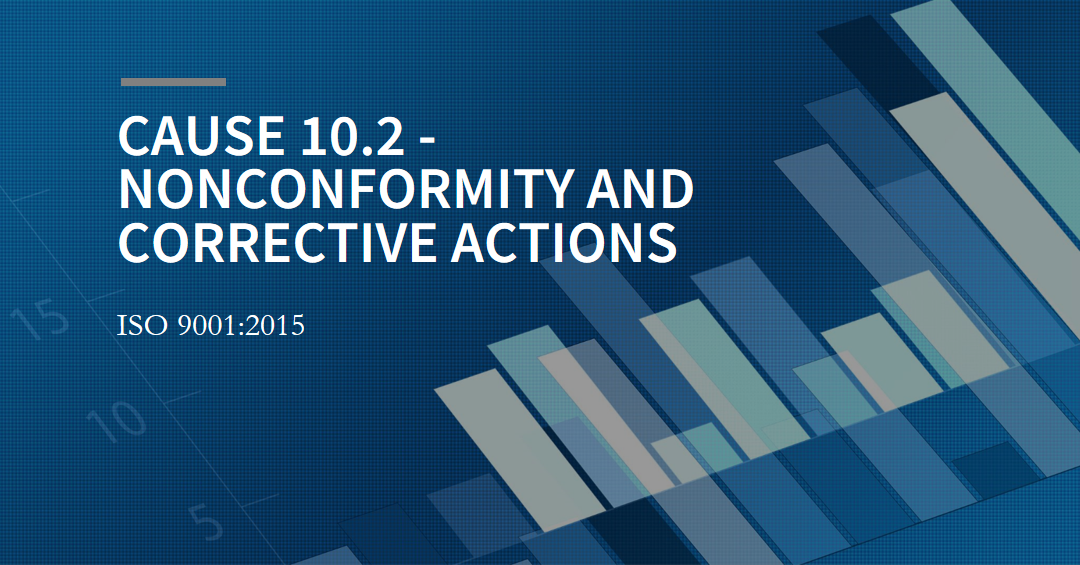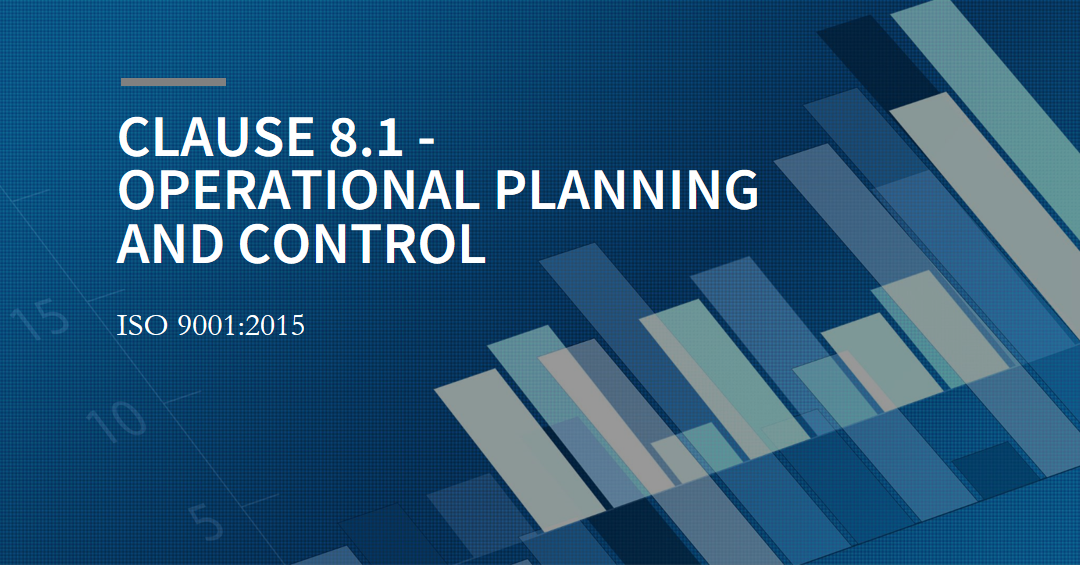
Introduction
Welcome to our in-depth exploration of Clause 5.1.2 - Customer Focus in ISO 9001:2015. This clause is the cornerstone of the ISO 9001:2015 standard, highlighting the critical role that customer satisfaction plays in a company's success and sustainability. As we delve into the complexities of this fundamental principle, we'll uncover why it's essential for businesses to not just meet, but exceed customer expectations.
ISO 9001:2015 is a globally recognized standard for quality management systems (QMS), designed to help organizations ensure they meet the needs of customers and other stakeholders. Clause 5.1.2 specifically addresses the necessity of maintaining a strong customer focus, making it a pivotal component of the standard.
In this article, we'll dissect Clause 5.1.2, providing you with actionable insights into how it can be implemented and maintained within your organization. Whether you're a seasoned quality management professional or new to the concept of ISO standards, this guide will equip you with the knowledge to enhance your customer focus and, by extension, your company's quality management practices.
Let's begin by understanding what Clause 5.1.2 entails and why it's such a vital aspect of the ISO 9001:2015 standard.
What is Clause 5.1.2 - Customer Focus?
Clause 5.1.2 of the ISO 9001:2015 standard is the guiding force that emphasizes the importance of customer focus for any organization seeking to implement a robust quality management system. This clause requires that top management not only ensures customer requirements are understood and met but also that future customer needs are anticipated and addressed.
Here's what the clause specifically calls for:
- Understanding customer requirements, both stated and implied, and meeting them effectively.
- Ensuring that any statutory and regulatory requirements related to the product or service are identified and adhered to.
- Maintaining a commitment to enhancing customer satisfaction.
This clause is the backbone of customer-centric quality management, pushing businesses to go beyond basic customer service. It's about embedding customer focus into the very culture and strategic direction of the organization.
Breaking Down the Clause:
- Understanding Customer Needs: It's not enough to wait for customers to tell you what they want. Proactively researching and predicting customer needs is crucial for staying ahead of the competition.
- Meeting Customer Requirements: This goes beyond the product or service itself. It includes every interaction the customer has with the company, from the initial contact to after-sales support.
- Enhancing Customer Satisfaction: It isn't just about meeting the bare minimum. The goal is to exceed expectations, creating not just satisfied customers but true advocates for your brand.
In essence, Clause 5.1.2 is a call to action for businesses to put their customers at the forefront of their operations, ensuring that the delivery of products and services is aligned with customer expectations and geared towards continuous improvement.
The Importance of Customer Focus in ISO 9001:2015
Customer focus within the ISO 9001:2015 framework is not just a recommendation; it's a business imperative. The importance of this clause can't be overstated, as it directly correlates to an organization's success and longevity in the market.
Here are a few reasons why customer focus is so important:
- Customer Retention: It is often said that it's more costly to acquire a new customer than to keep an existing one. By focusing on customer satisfaction, businesses can increase customer loyalty and retention rates.
- Business Reputation: In the age of social media and online reviews, one poor customer experience can significantly impact a company's reputation. Prioritizing customer focus helps in building a positive brand image.
- Competitive Advantage: In crowded markets, the quality of customer interaction can be the differentiating factor that sets a business apart from its competitors.
- Financial Performance: There is a strong link between customer satisfaction and financial performance. Satisfied customers often lead to repeat business and referrals, driving revenue and profitability.
- Compliance and Improvement: Clause 5.1.2 is also about compliance with established quality management principles and the constant pursuit of improvement, ensuring that the business doesn't just stand still but evolves with its customer base.
By placing customers at the heart of the quality management system, organizations not only adhere to the ISO 9001:2015 standards but also set themselves up for sustainable growth and success.
Key Requirements of Clause 5.1.2 - Customer Focus
Delving into the specific requirements of Clause 5.1.2 - Customer Focus in ISO 9001:2015, we can identify several key actions that organizations must take to comply with the standard:
- Understand Customer Needs and Expectations: This involves conducting market research, gathering customer feedback, and engaging in direct communication to grasp fully what customers expect from your products or services.
- Ensure Customer Requirements Are Met: Organizations must align their processes to meet these needs consistently. This means integrating customer requirements into product design, service delivery, and post-purchase support.
- Measure Customer Satisfaction: Implementing systems to regularly collect and analyze customer feedback helps in understanding how well the organization is meeting expectations. Surveys, reviews, and direct customer feedback are valuable tools for this purpose.
- Manage Customer Relationships: Building and maintaining strong relationships with customers is essential. This includes effective communication, being responsive to customer inquiries, and resolving any issues promptly.
To meet these requirements, businesses should consider the following steps:
- Establish customer-focused objectives aligned with the business strategy.
- Designate responsibility to specific team members or departments for managing customer focus initiatives.
- Develop procedures for handling customer complaints and feedback.
- Train employees on the importance of customer focus and how to contribute to it.
- Regularly review and improve customer-focused processes based on feedback and performance data.
By adhering to these key requirements, organizations can create a QMS that not only satisfies the standards set by ISO 9001:2015 but also drives continual improvement in customer satisfaction.
Leadership and Customer Focus
The role of leadership in promoting Customer Focus under Clause 5.1.2 of ISO 9001:2015 cannot be underestimated. It is the top management's responsibility to ensure that customer focus is a core value within the organization's culture and strategic direction.
Strategies for Leadership to Maintain Customer Focus:
- Set a Clear Vision: Leaders must articulate a clear vision for what customer focus means for the organization and how it translates into day-to-day operations.
- Lead by Example: Management should demonstrate customer focus in their actions, which sets a precedent for the rest of the staff to follow.
- Allocate Resources: Ensuring that there are sufficient resources, including trained personnel, tools, and technology, to support customer-centric initiatives.
- Communicate the Importance: Regularly communicate the importance of customer focus to all levels of the organization, ensuring it remains a top priority.
- Empower Employees: Give employees the authority and responsibility to make customer-focused decisions, fostering a sense of ownership and accountability.
By taking these steps, leadership can ensure that customer focus is not just a clause to be complied with but a driving force that propels the organization forward.
Implementing Customer Focus in Your Organization
Putting Clause 5.1.2 - Customer Focus into practice requires a strategic approach. Here's how to embed customer focus into the very fabric of your organization:
- Integrate Customer Focus into Business Strategy: Your business strategy should clearly articulate how customer focus will be achieved and maintained. This includes setting specific, measurable goals related to customer satisfaction and loyalty.
- Develop a Customer-Focused Culture: Leadership should nurture an organizational culture that values every customer. This can be done through training programs, employee incentives, and recognition for exceptional customer service.
- Training and Employee Involvement: Employees at all levels should understand the importance of customer focus and how their role contributes to it. Regular training sessions can help reinforce this message.
- Communication: Ensure that the importance of customer focus is communicated throughout the organization. This can include internal newsletters, meetings, and workshops that highlight successes and areas for improvement.
Steps to Implementing Customer Focus:
- Assess Current Customer Satisfaction Levels: Use surveys, feedback forms, and direct communication to understand your current standing.
- Identify Areas for Improvement: Analyze the data to pinpoint areas where customer expectations are not being met.
- Create an Action Plan: Develop a detailed plan to address these areas, with clear timelines and responsibilities.
- Monitor Progress: Regularly review the effectiveness of your customer focus initiatives and make necessary adjustments.
By taking these actions, organizations can ensure that customer focus is not just a part of their quality management system but also a key driver of overall business performance.
Challenges in Upholding Clause 5.1.2 - Customer Focus
While implementing customer focus is crucial, businesses often face challenges in upholding the principles of Clause 5.1.2. These obstacles can include:
- Resistance to Change: Employees may be resistant to new processes and priorities, particularly if they are accustomed to doing things a certain way.
- Resource Limitations: There may be limitations in terms of budget, time, or personnel to fully implement customer-focused initiatives.
- Measuring Satisfaction: Accurately measuring customer satisfaction can be difficult, as it often involves subjective assessments and qualitative data.
Strategies to Overcome These Challenges:
- Engage Employees: Involve employees in the development and implementation of customer focus strategies to foster buy-in and reduce resistance.
- Prioritize Investments: Allocate resources strategically, ensuring that customer focus initiatives that offer the greatest potential impact are prioritized.
- Leverage Technology: Utilize customer relationship management (CRM) systems and data analytics tools to gather and analyze customer feedback more effectively.
By anticipating and addressing these challenges, organizations can maintain a strong customer focus and continuously improve their quality management practices.
Measuring the Effectiveness of Customer Focus Strategies
To ensure that the implementation of Clause 5.1.2 - Customer Focus is not only adhered to but is also effective, organizations need to measure the impact of their customer focus strategies. This measurement is crucial for understanding what's working, what isn't, and where improvements can be made.
Tools and Techniques for Assessing Customer Satisfaction:
- Customer Surveys: Regularly distributed surveys can provide insights into customer perceptions and experiences with your products or services.
- Net Promoter Score (NPS): This metric gauges customer loyalty and the likelihood of them recommending your company to others.
- Customer Feedback Forms: These can be used to gather immediate responses from customers about specific interactions or transactions.
- Social Media Monitoring: Keeping an eye on social media platforms can offer real-time feedback and broader insights into customer sentiment.
- Customer Service Metrics: Analyzing data on response times, resolution rates, and service interactions can reveal areas for improvement in customer support.
Analyzing Customer Feedback:
Once you have collected customer feedback, it's essential to analyze it effectively:
- Identify Patterns and Trends: Look for common themes in the feedback that can point to systemic issues or areas of strength.
- Segment Feedback: Break down the feedback by customer demographics, product lines, or service areas to understand different experiences and needs.
- Act on the Data: Use the insights gained from analysis to implement changes and improvements in your customer focus strategies.
Continuous Improvement Based on Customer Input:
- Adjust Processes: Based on feedback, modify your processes and strategies to better meet customer needs.
- Train Staff: Use feedback to inform training programs that can improve customer interactions.
- Update Objectives: Revise your customer-focused objectives and KPIs to reflect new insights and targets for improvement.
By regularly measuring and analyzing the effectiveness of customer focus strategies, organizations can ensure that their QMS is not just compliant with ISO 9001:2015 but is also driving tangible improvements in customer satisfaction.
Frequently Asked Questions (FAQs) about Clause 5.1.2 - Customer Focus
When it comes to Clause 5.1.2 - Customer Focus in ISO 9001:2015, several questions often arise. Here are some of the most common inquiries along with their answers:
How does customer focus differ from customer service?
Customer focus is a broad strategic approach that involves understanding and meeting customer needs throughout the entire organization. Customer service, on the other hand, is the support offered to customers during and after the purchase of products or services. While customer service is a critical component of customer focus, the latter encompasses a much wider scope, including product design, quality control, and after-sales support.
Can customer focus improve the bottom line?
Absolutely. A strong customer focus can lead to increased customer satisfaction, which often results in repeat business, positive word-of-mouth referrals, and a strong brand reputation. These factors can all contribute to an improved bottom line through higher sales and reduced costs associated with customer acquisition and retention.
How often should customer feedback be collected and analyzed?
Customer feedback should be collected on a regular and ongoing basis. The frequency can vary depending on the nature of the business and customer interaction points. Some organizations may benefit from real-time feedback systems, while others may find monthly or quarterly surveys more appropriate. The key is to ensure that feedback is collected often enough to stay relevant and actionable.
Conclusion
Clause 5.1.2 - Customer Focus is more than just a requirement of the ISO 9001:2015 standard; it's a foundational principle for any organization striving for excellence in quality management. By understanding and implementing the key requirements of this clause, businesses can build stronger relationships with their customers, enhance their reputation, and pave the way for sustained success.
Remember, the journey to exceptional customer focus is continuous, with ongoing measurement, analysis, and improvement. It's a strategic choice that can differentiate your business and drive it toward a future of growth and prosperity.
Call to Action
Now that you've gained a deeper understanding of Clause 5.1.2 - Customer Focus, it's time to take action. Evaluate your current customer focus practices, identify areas for improvement, and start implementing strategies that will take your customer satisfaction to new heights. Remember, the voice of the customer is a powerful tool for driving your business forward.
If you're ready to enhance your organization's customer focus but need more guidance or support, consider reaching out to us here at Encompass Consultants.
Additional Resources
For further reading and resources on enhancing customer focus and understanding ISO 9001:2015, consider the following:
- Official ISO resources and guidelines: ISO.org
- Books on customer focus and quality management: "The Customer-Driven Company" by Richard C. Whiteley
By leveraging these resources, you can deepen your knowledge and ensure that your organization remains at the forefront of quality management and customer satisfaction.
















